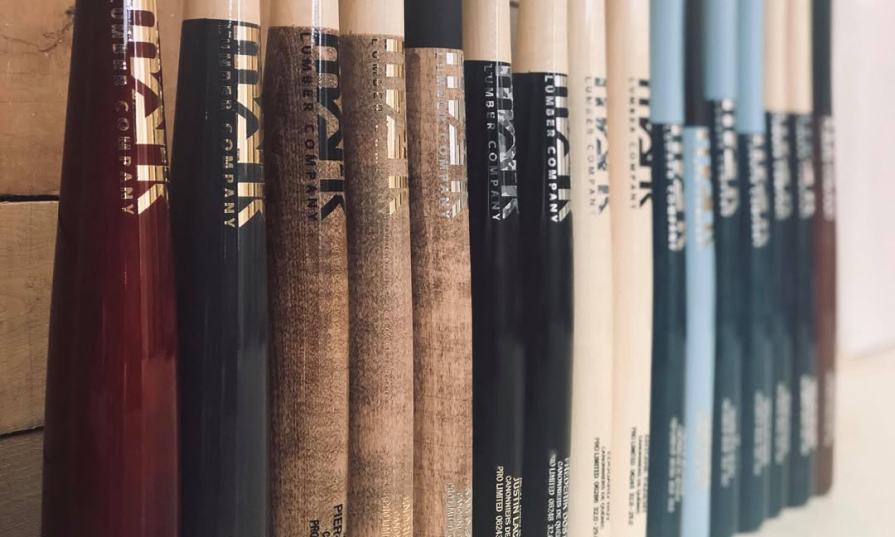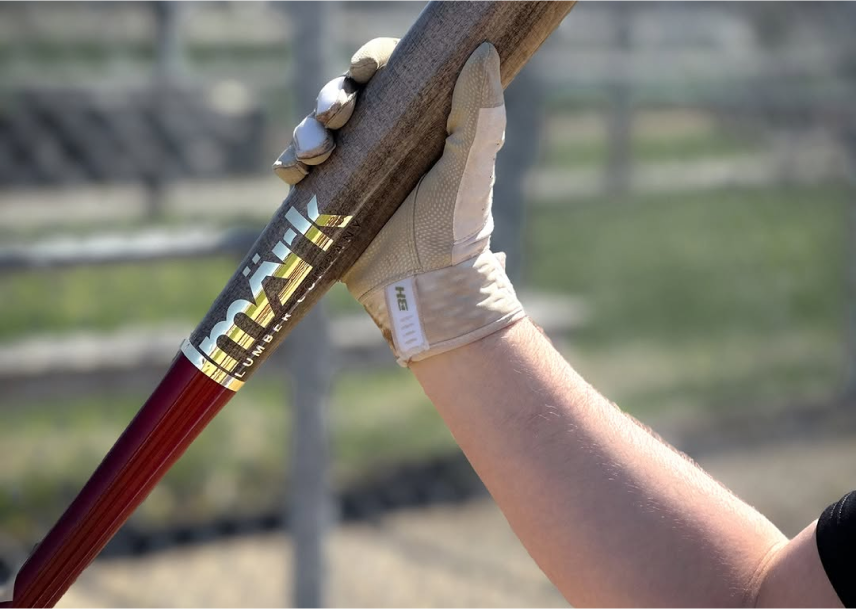
Best Baseball Bats

Every great hit starts with the right bat. The best baseball bats don’t just feel good in your hands—they elevate your swing, sharpen your instincts, and ignite your confidence. Whether you're chasing your first homer or crushing line drives, the perfect bat can change your game. This guide helps you find the bat that matches your passion, power, and performance at every level. Discover how good baseball bats and wood baseball bats can transform your swing and maximize your results at the plate.

What makes a Good Baseball Bat
A good baseball bat starts with premium wood, but it’s the little things that truly define greatness:
- Dense grain for explosive energy transfer with each swing
- Solid construction that holds up under pressure moments
- Balanced feel that promotes speed, consistency, and fluid motion
It’s not just a tool—it’s a rhythm partner. A bat you can trust is a bat that becomes second nature. You don’t just grip it—you grow with it. With the right wood baseball bats, every contact feels smooth, powerful, and controlled—just the way baseball bats were meant to perform.


Types of Baseball Wood Bats
Different baseball wood bats offer unique benefits depending on how you hit. Maple delivers solid power with a stiff feel, great for hard hitters. Ash offers more flex and faster swing speed, ideal for contact hitters. Birch blends the best of both—durability with a forgiving feel. Understanding how each wood baseball bat performs helps players choose a bat that fits their swing. The right wood can improve control, power, and overall performance at the plate. For players seeking good baseball bats that balance tradition and technology, choosing the right material makes all the difference.


What makes a Good Baseball Bat
A good baseball bat starts with premium wood, but it’s the little things that truly define greatness:
- Dense grain for explosive energy transfer with each swing
- Solid construction that holds up under pressure moments
- Balanced feel that promotes speed, consistency, and fluid motion
It’s not just a tool—it’s a rhythm partner. A bat you can trust is a bat that becomes second nature. You don’t just grip it—you grow with it. With the right wood baseball bats, every contact feels smooth, powerful, and controlled—just the way baseball bats were meant to perform.

Types of Baseball Wood Bats
Different baseball wood bats offer unique benefits depending on how you hit. Maple delivers solid power with a stiff feel, great for hard hitters. Ash offers more flex and faster swing speed, ideal for contact hitters. Birch blends the best of both—durability with a forgiving feel. Understanding how each wood baseball bat performs helps players choose a bat that fits their swing. The right wood can improve control, power, and overall performance at the plate. For players seeking good baseball bats that balance tradition and technology, choosing the right material makes all the difference.
When you think of top-tier baseball bats in Canada, MARK LUMBER leads the pack. We turn cold-climate maple into precision tools for serious hitters.
- Hand-selected billets with optimal grain alignment and density
- Crafted in Québec by players who understand feel, torque, and balance
- Consistency and care from start to finish, delivered coast to coast
We don’t just make wood baseball bats—we preserve a tradition. With every swing, you're holding a piece of Canadian pride and baseball heritage. Players across North America trust our good baseball bats for their unmatched craftsmanship, performance, and reliability.

EDDY J
ML-110
MW38
TS33
ML-271 YOUTH 2-1/4''
FREQUENTLY ASKED QUESTIONS
How do I choose the best baseball bat for my swing?
If you're wondering how to choose the best baseball bats, start by thinking about your swing style, strength, and comfort level. Power hitters tend to benefit from good baseball bats with more weight at the barrel (end-loaded), while contact hitters usually prefer lighter, balanced baseball bats for faster swings and better control.
Look at the bat's length, drop weight, and handle thickness—each of these factors will affect how the bat feels in motion. Material matters too: maple is dense and powerful, ash is flexible and light, and birch offers a blend of both. Testing different wood baseball bats is the best way to know what truly fits.
The best bat isn't just popular—it’s the one that helps you swing naturally and confidently, every time you step up to the plate with one of our good baseball bats in hand.
How do I figure out the best baseball bat sizing for my level?
Proper baseball bat sizing starts with understanding your experience level. If you're a beginner, go for lightweight, balanced baseball bats—this will help you build good habits without overcompensating for weight or control.
Intermediate and advanced players can experiment with heavier or end-loaded baseball bats that match their swing power. Sizing charts based on height and weight are a great starting point, but they're just that—a start. Your stance, swing speed, and hitting goals all matter. Try a few wood baseball bats to see what feels right in motion.
A properly sized bat should let you swing freely, stay balanced, and hit with confidence. The goal is comfort and control, not just compliance with a chart.
What are the key baseball bat measurements I should know?
Understanding baseball bat measurements can make all the difference. The two main measurements are length (in inches) and weight (in ounces). The difference between these two numbers is called the drop.
For example, a 30-inch bat that weighs 20 ounces has a drop of -10. The higher the drop, the lighter the bat. Lighter baseball bats are easier to swing and allow for more speed, while heavier bats, typically with lower drops, can offer more power if you can handle the weight.
It's also helpful to know barrel diameter and handle thickness, especially for wood baseball bats, as these affect feel and performance. Knowing your bat's measurements ensures a better fit for your skill level and swing style, helping you find good baseball bats that enhance your game.
What is considered the right baseball bat size for my body type?
Finding the right baseball bat size means looking beyond just your height. Your strength, swing speed, and comfort level all come into play. Taller or more muscular players may do well with longer, slightly heavier baseball bats that deliver more reach and power.
Smaller-framed players might benefit from lighter, more balanced options that allow for faster swings and better control. It's also important to consider your hitting style—power hitters may prefer a different setup than contact hitters. Use a size chart as a guide, but trust how the bat feels in your hands.
The right size allows for smooth, effortless movement, helping you stay quick through the zone and consistent at the plate. Choosing good baseball bats ensures that each swing feels natural and controlled.
How long is a baseball bat for youth players vs. adults?
Baseball bat length varies based on the player's age, size, and swing mechanics. Youth models typically range from 26 to 30 inches, while adult bats commonly fall between 31 and 34 inches.
But there's more to it than age alone. A smaller player might struggle with a longer bat, even if it's technically "correct" for their age group. Likewise, a strong teen may benefit from moving up in size early. The key is control—can the player swing the bat comfortably and stay balanced? A good fit allows for a full swing without hesitation.
Charts help, but testing different lengths in practice with wood baseball bats is the best way to find what works. A bat that's too long or too short can throw off timing and confidence.















